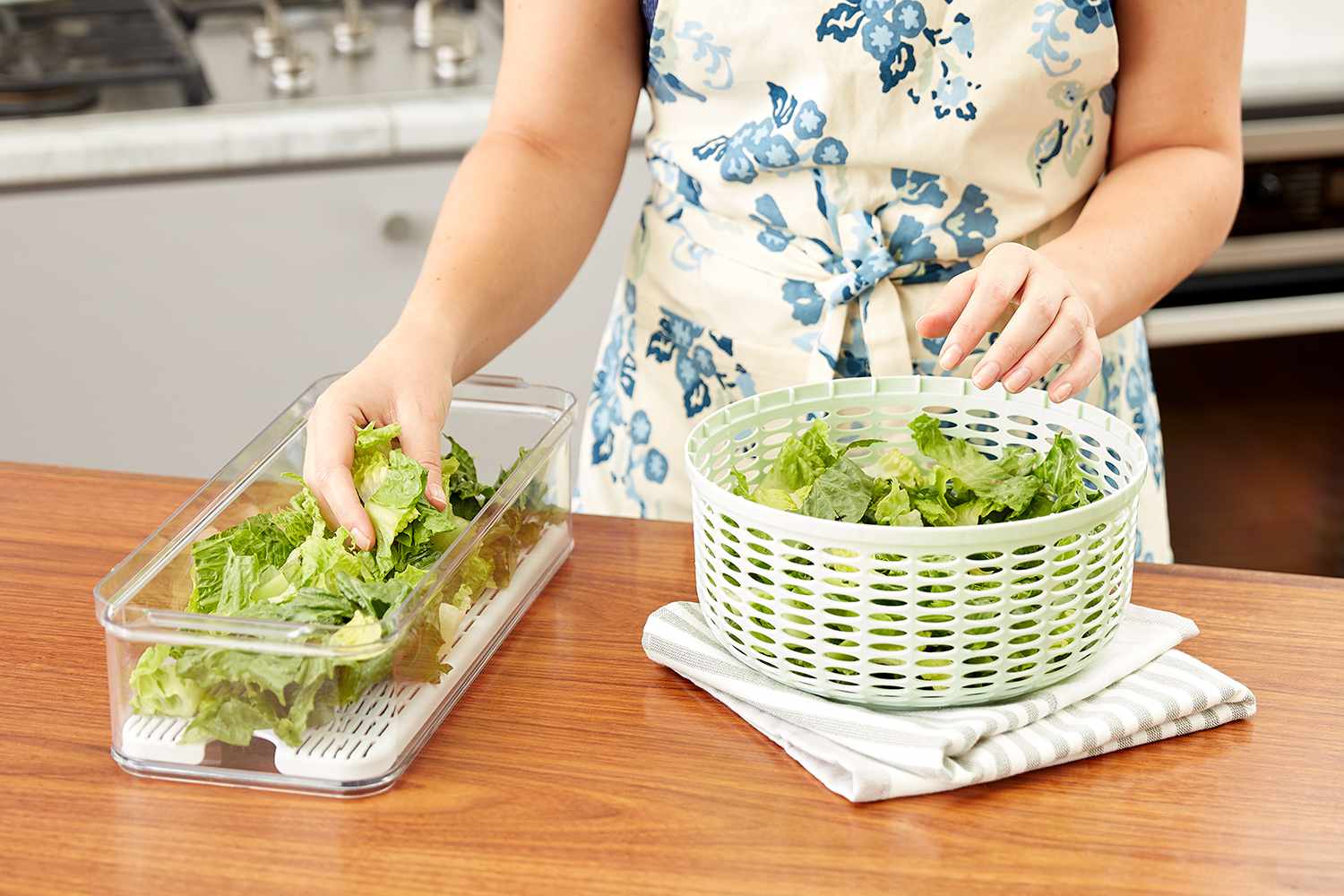

Articles
How To Store Lettuce In The Refrigerator
Modified: February 24, 2024
Learn effective ways to store lettuce in the refrigerator and keep it fresh for longer. Find useful articles on lettuce storage and preservation.
(Many of the links in this article redirect to a specific reviewed product. Your purchase of these products through affiliate links helps to generate commission for Storables.com, at no extra cost. Learn more)
Introduction
Welcome to our comprehensive guide on how to store lettuce in the refrigerator. Lettuce is a versatile and nutritious vegetable that is a staple in many households. From crisp salads to refreshing wraps, lettuce adds a healthy crunch to a variety of dishes. However, if not stored properly, lettuce can quickly wilt and lose its freshness, leading to a disappointing dining experience.
Proper storage is crucial to extend the shelf life of lettuce and maintain its crispness. In this article, we will explore the ideal storage conditions for lettuce, provide a step-by-step guide on how to store it in the refrigerator, offer additional tips to keep lettuce fresh, and highlight common mistakes to avoid.
By following these guidelines, you can enjoy crisp, vibrant lettuce for longer periods, minimizing waste and ensuring that your salads and sandwiches are always top-notch.
Key Takeaways:
- Keep lettuce fresh by storing it at 32°F to 40°F with 95% humidity, away from ethylene-producing fruits. Avoid common mistakes like overcrowding and storing wet lettuce to maintain its crispness and nutritional value.
- Follow a step-by-step guide to store lettuce in the refrigerator, and incorporate additional tips like washing lettuce right before use and refrigerating dressings separately. Avoid freezing lettuce and overcrowding storage containers to prolong freshness.
Read more: How To Store Lettuce In Refrigerator
Why is Proper Lettuce Storage Important
Proper lettuce storage is essential for several reasons. Firstly, it helps to maintain the freshness and crispness of the lettuce. When lettuce is stored correctly, it retains its natural moisture and texture, making it more enjoyable to eat.
Secondly, storing lettuce properly helps to prevent wilting and spoilage. Lettuce is a highly perishable vegetable that can quickly deteriorate if exposed to unfavorable conditions. By ensuring that lettuce is stored correctly, you can prolong its shelf life and avoid waste.
Thirdly, properly stored lettuce is more nutritious. Lettuce is a rich source of vitamins and minerals, including vitamin K, vitamin A, and folate. However, exposure to heat and air can cause nutrient loss. By storing lettuce in the refrigerator, you can preserve its nutritional value and reap the full benefits of this healthy vegetable.
Furthermore, proper storage reduces the risk of bacterial growth. Lettuce can harbor harmful bacteria such as E. coli and salmonella, which can cause foodborne illnesses. By storing lettuce at the right temperature and keeping it separate from raw meats and other potential contaminants, you can minimize the risk of foodborne illnesses and ensure the safety of your meals.
Lastly, proper lettuce storage helps you save money. By extending the shelf life of lettuce, you can reduce food waste and avoid frequent trips to the grocery store. With the rising cost of groceries, optimizing your storage methods can contribute to significant savings over time.
Overall, proper lettuce storage is important for maintaining freshness, preventing wilting and spoilage, preserving nutritional value, ensuring food safety, and saving money. Now let’s delve into the ideal storage conditions for lettuce.
Understanding the Ideal Storage Conditions
To keep lettuce fresh and crisp, it is important to store it under the ideal conditions. Lettuce is a delicate leafy green that is sensitive to temperature, humidity, and ethylene gas. Therefore, it is crucial to create an environment that minimizes moisture loss, prevents excessive moisture buildup, and slows down the release of ethylene gas.
The ideal temperature for storing lettuce is between 32°F (0°C) and 40°F (4°C). This range helps to slow down the oxidation process and prevent wilting. However, be careful not to freeze the lettuce, as it will lose its crispness and become mushy when thawed.
Humidity is another important factor to consider. Lettuce tends to wilt quickly in dry environments. Therefore, it is recommended to store lettuce with a humidity level of 95 percent. This can be achieved by placing the lettuce in a perforated plastic bag or wrapping it loosely in a damp paper towel. The moisture from the towel will create a humid microclimate around the lettuce, keeping it fresh and crisp.
Ethylene gas is a natural plant hormone that accelerates ripening and senescence in fruits and vegetables. Some fruits, such as apples and bananas, release higher levels of ethylene gas, which can cause lettuce to wilt faster. To prevent ethylene gas from damaging the lettuce, store it away from ethylene-producing fruits and vegetables. It is also advisable to keep lettuce separate from raw meats and other strong-smelling foods to avoid flavor transfer.
In summary, the ideal storage conditions for lettuce include a temperature range of 32°F (0°C) to 40°F (4°C), high humidity (around 95 percent), and isolation from ethylene-producing fruits and vegetables. Now, let’s move on to the step-by-step guide on how to store lettuce in the refrigerator.
Step-by-Step Guide: How to Store Lettuce in the Refrigerator
Follow these simple steps to store lettuce in the refrigerator and keep it fresh for as long as possible:
- Start by selecting fresh, crisp lettuce. Look for leaves that are vibrant in color and free from blemishes.
- Gently remove any dirt or debris from the lettuce leaves by rinsing them under cold water. Pat the leaves dry with a clean kitchen towel or use a salad spinner to remove excess moisture.
- If you have a head of lettuce, consider separating the leaves to make them easier to store. Alternatively, you can store the whole head if desired.
- Prepare the storage container. Line a crisper drawer or airtight container with a paper towel or a damp, perforated plastic bag. This helps to absorb excess moisture and maintain a humid environment.
- Place the lettuce leaves or the whole head into the prepared container. Make sure to arrange them in a single layer to prevent overcrowding and potential bruising.
- Seal the container tightly to keep moisture in and prevent the entry of air. If using a plastic bag, loosely close it or puncture a few small holes in it to allow for proper air circulation.
- Store the lettuce in the refrigerator at a temperature between 32°F (0°C) and 40°F (4°C). Avoid placing it near areas with temperature fluctuations, such as the refrigerator door or crisper vents.
- Check the lettuce regularly for any signs of wilting or spoilage. Remove any damaged or wilted leaves promptly to prevent them from affecting the rest of the lettuce.
- Before using the stored lettuce, give it a quick rinse under cold water to remove any excess moisture. Pat the leaves dry before incorporating them into your favorite dishes.
By following these steps, you can maintain the freshness and crispness of your lettuce for an extended period. Now, let’s explore some additional tips to help you keep lettuce fresh for even longer.
To store lettuce in the refrigerator, first remove any damaged leaves, then wrap the lettuce in a paper towel and place it in a resealable plastic bag. Squeeze out any excess air before sealing the bag to help keep the lettuce fresh for longer.
Additional Tips for Keeping Lettuce Fresh
Aside from proper storage in the refrigerator, there are a few additional tips you can follow to maximize the freshness and shelf life of your lettuce:
- Wash lettuce right before using: Instead of washing the entire head or bunch of lettuce in advance, it is best to wash the leaves right before using them. This helps to prevent excess moisture buildup and prolongs the crispness.
- Avoid cutting lettuce in advance: Cutting or tearing lettuce causes it to release moisture and accelerates wilting. To maintain its freshness, it is recommended to cut or tear lettuce just before you are ready to eat or prepare your dish.
- Store leftover lettuce in airtight containers: If you have leftover lettuce after a meal, store it in an airtight container lined with a paper towel. This helps to maintain its crispness and prevents it from absorbing odors from other foods in the refrigerator.
- Consider blanching for longer storage: If you have a surplus of lettuce and want to store it for an extended period, consider blanching it before freezing. Blanching helps to retain the quality of the lettuce and can keep it fresh for up to three months.
- Use breathable storage bags: If you prefer using plastic bags to store your lettuce, opt for breathable bags specifically designed for fruits and vegetables. These bags allow for proper air circulation and help to prevent moisture buildup.
- Refrigerate lettuce dressings separately: If you like to add dressings or sauces to your lettuce, it is best to keep them separate until you are ready to consume the salad. Dressings can make the lettuce wilt faster, so add them just before serving.
By incorporating these additional tips into your lettuce storage routine, you can significantly prolong the freshness and quality of your lettuce, allowing you to enjoy it in its best form.
However, there are a few common mistakes to be aware of to ensure optimal lettuce storage. Let’s discuss them in the next section.
Read more: How To Store Lettuce
Common Mistakes to Avoid
When it comes to storing lettuce, there are a few common mistakes that can lead to premature wilting or spoilage. By avoiding these mistakes, you can ensure that your lettuce stays fresh and flavorful:
- Leaving lettuce unwashed: While it may seem convenient to store lettuce without washing it, this can lead to bacterial growth and accelerated deterioration. Always wash and dry the lettuce thoroughly before storing it in the refrigerator.
- Storing wet lettuce: Excess moisture can cause lettuce to become limp and soggy. It is important to dry the leaves completely before placing them in a storage container to prevent moisture buildup.
- Overcrowding the storage container: Packing too many lettuce leaves in a small container can lead to bruising and accelerated wilting. Make sure to arrange the leaves in a single layer and provide enough space for air circulation.
- Storing lettuce with ethylene-producing fruits: As mentioned earlier, ethylene gas can cause lettuce to wilt faster. Avoid storing lettuce near fruits like apples, bananas, and tomatoes, which produce high levels of ethylene gas.
- Freezing lettuce: While refrigeration is necessary for lettuce storage, freezing it will result in a loss of texture and crispness. Keep the temperature above freezing point to maintain the lettuce’s quality.
- Using non-breathable storage containers: Storing lettuce in non-breathable containers can lead to excess moisture retention, promoting mold growth and wilting. Opt for breathable containers, perforated plastic bags, or lettuce-specific storage containers.
- Not checking and removing damaged leaves: If a single leaf in your storage container starts to decay or wilt, it can quickly spread to the rest of the lettuce. Regularly inspect the lettuce for any damaged leaves and remove them promptly to prevent spoilage.
By avoiding these common mistakes, you can extend the freshness of your lettuce and enjoy it in its best condition. Now, let’s conclude our guide on how to store lettuce in the refrigerator.
Conclusion
Properly storing lettuce in the refrigerator is essential to maintain its freshness and crispness. By understanding the ideal storage conditions, following a step-by-step guide, and implementing additional tips, you can extend the shelf life of your lettuce and minimize waste.
Remember to store lettuce at a temperature between 32°F (0°C) and 40°F (4°C), with a humidity level of around 95 percent. Keep it separate from ethylene-producing fruits and vegetables to prevent premature wilting. Additionally, avoid common mistakes such as leaving lettuce unwashed, overcrowding the storage container, and not checking for damaged leaves.
By taking these measures, you can enjoy crisp and vibrant lettuce for longer periods, ensuring that your salads, sandwiches, and wraps are always at their best. Proper lettuce storage not only preserves freshness but also helps maintain nutritional value, prevents spoilage, reduces the risk of foodborne illnesses, and saves you money.
So next time you bring home a fresh batch of lettuce, remember to store it correctly in the refrigerator, following the guidelines outlined in this article. By doing so, you can make the most out of your lettuce and elevate your culinary creations.
Thank you for reading our comprehensive guide on how to store lettuce in the refrigerator. We hope these tips and techniques will help you keep your lettuce fresh and delicious. Enjoy your crisp and refreshing salads!
Frequently Asked Questions about How To Store Lettuce In The Refrigerator
Was this page helpful?
At Storables.com, we guarantee accurate and reliable information. Our content, validated by Expert Board Contributors, is crafted following stringent Editorial Policies. We're committed to providing you with well-researched, expert-backed insights for all your informational needs.
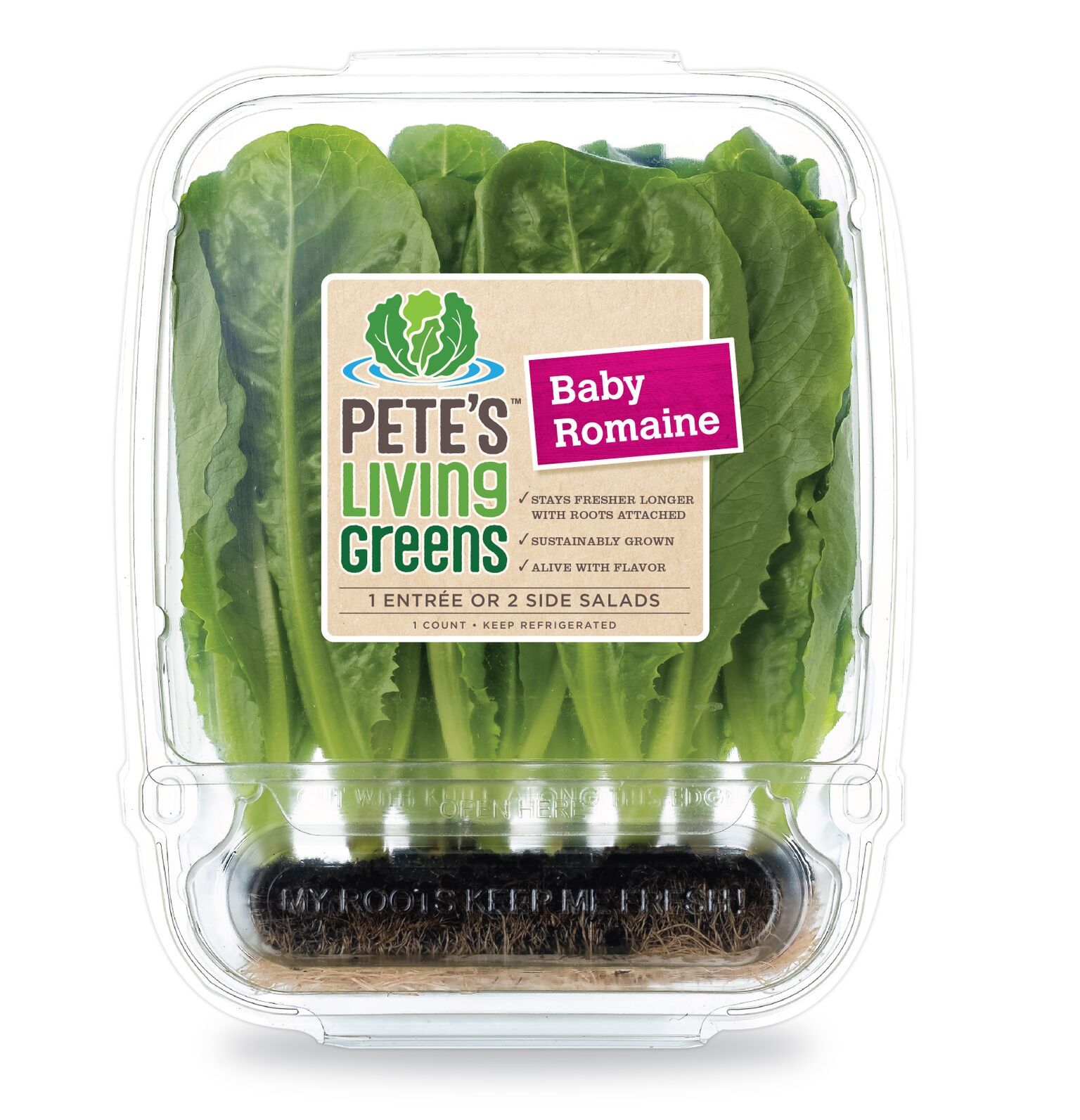
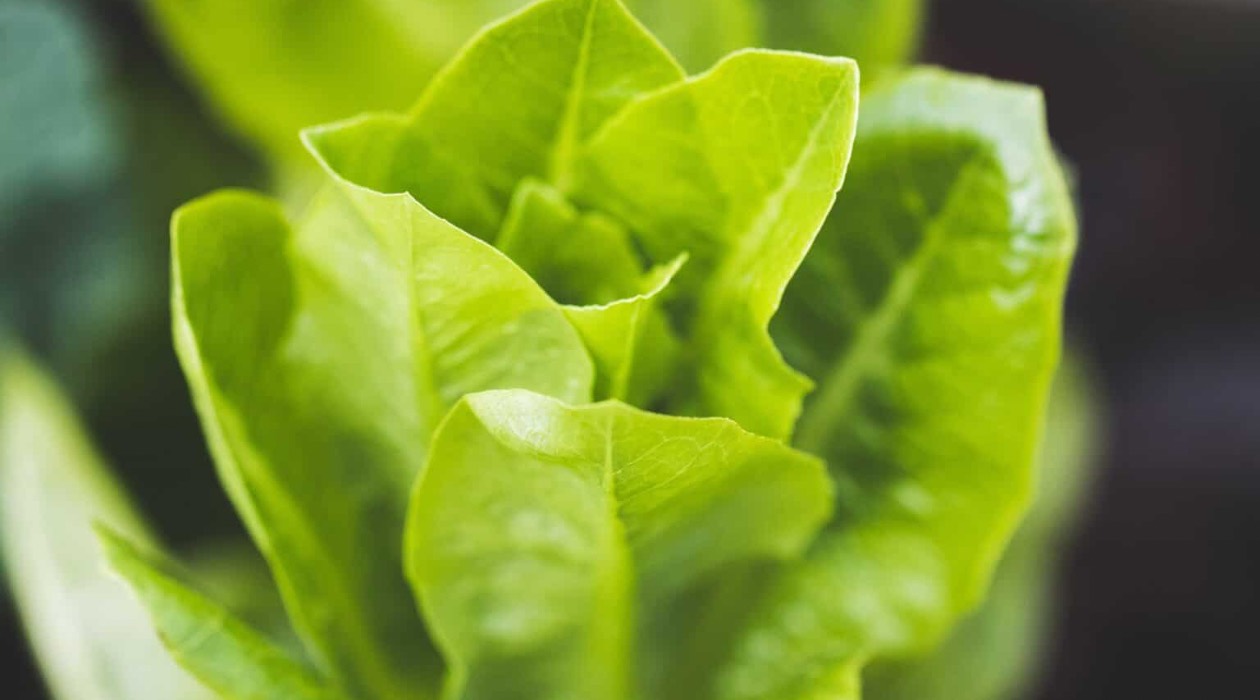
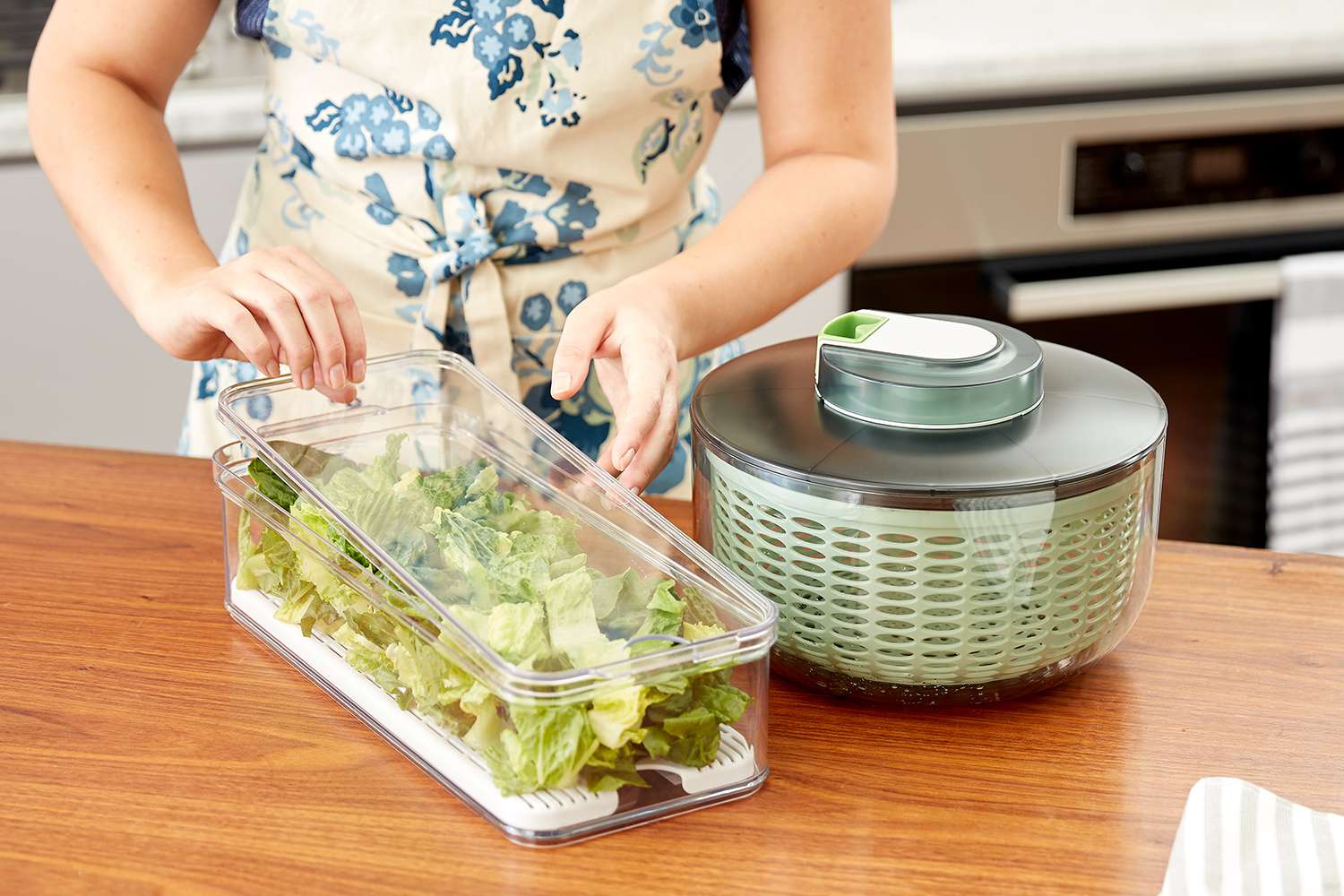
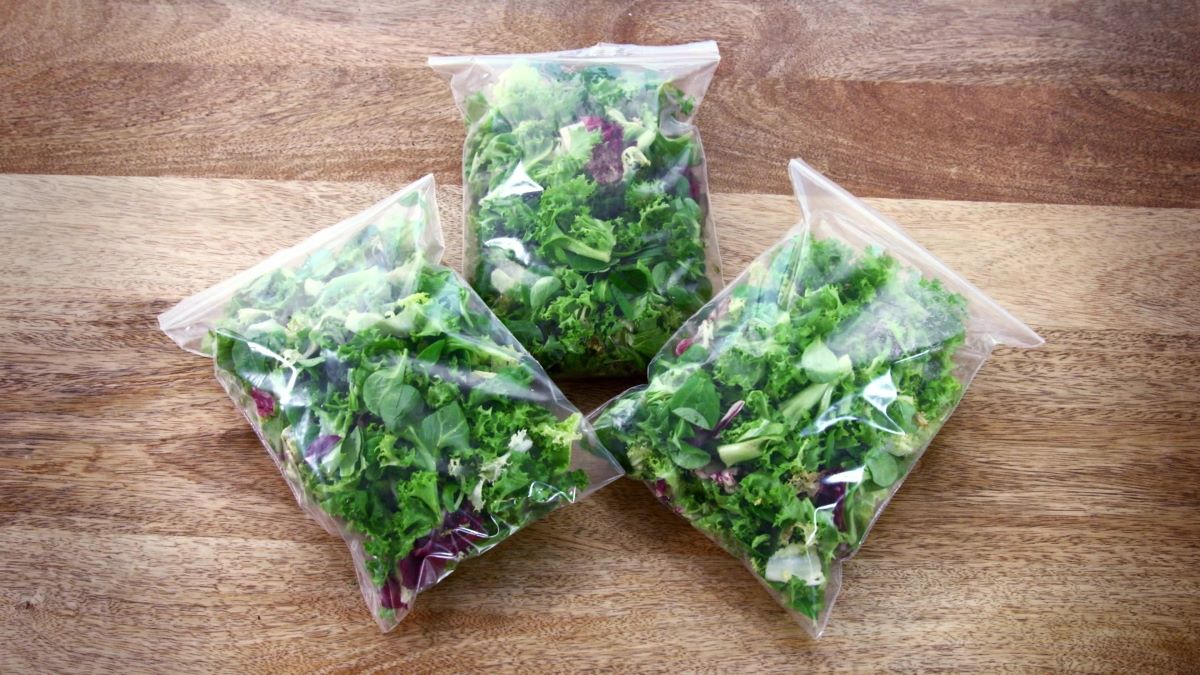
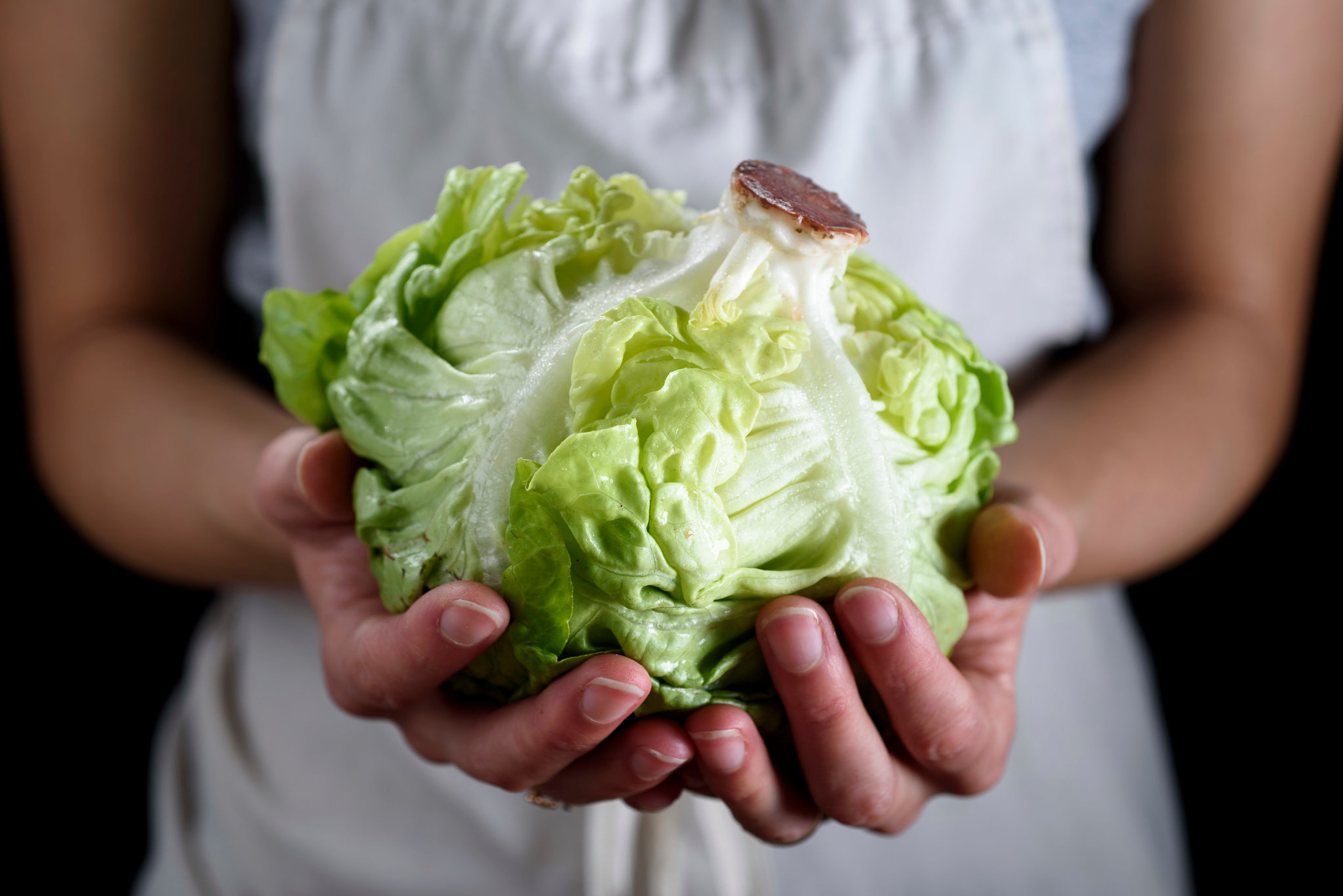

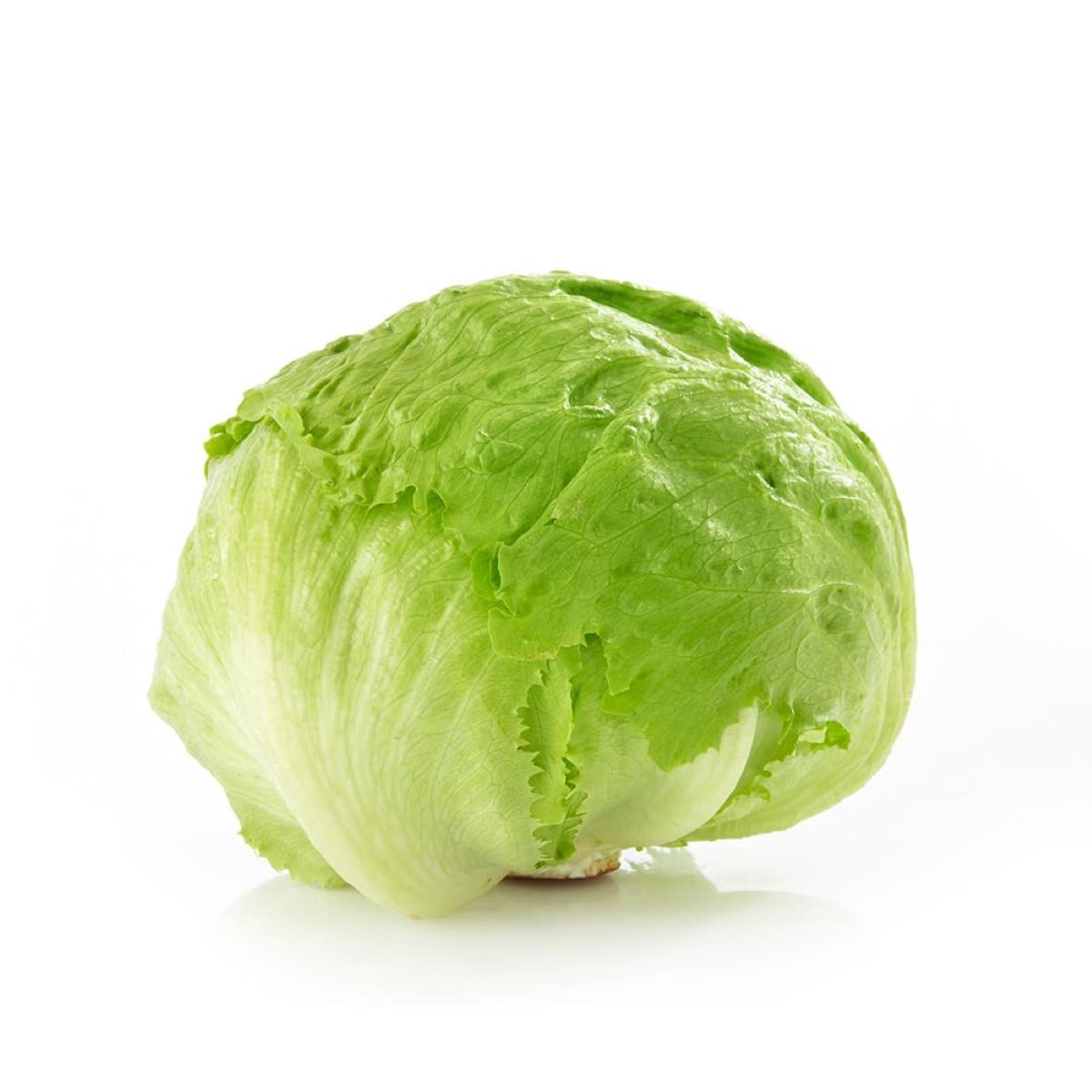
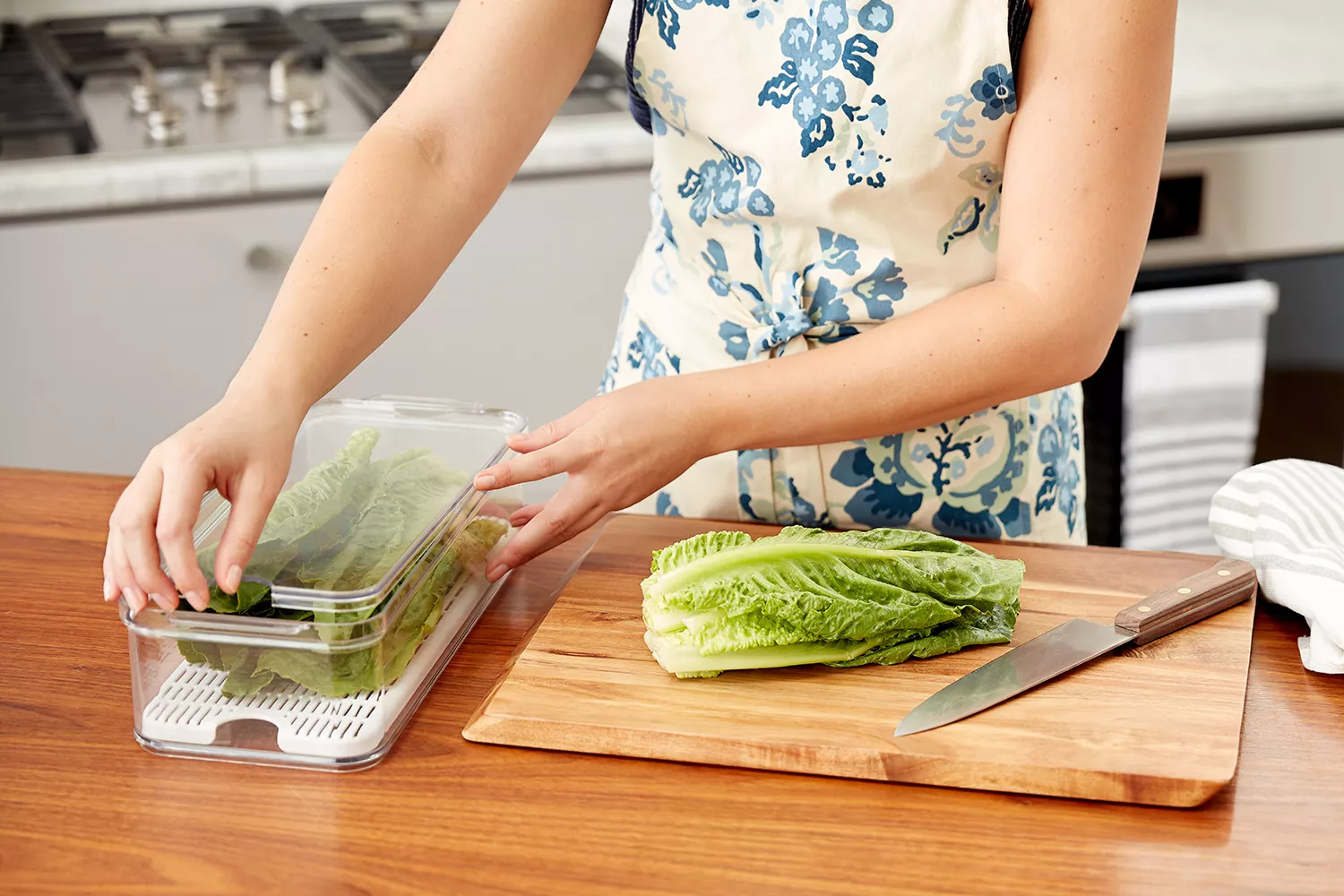
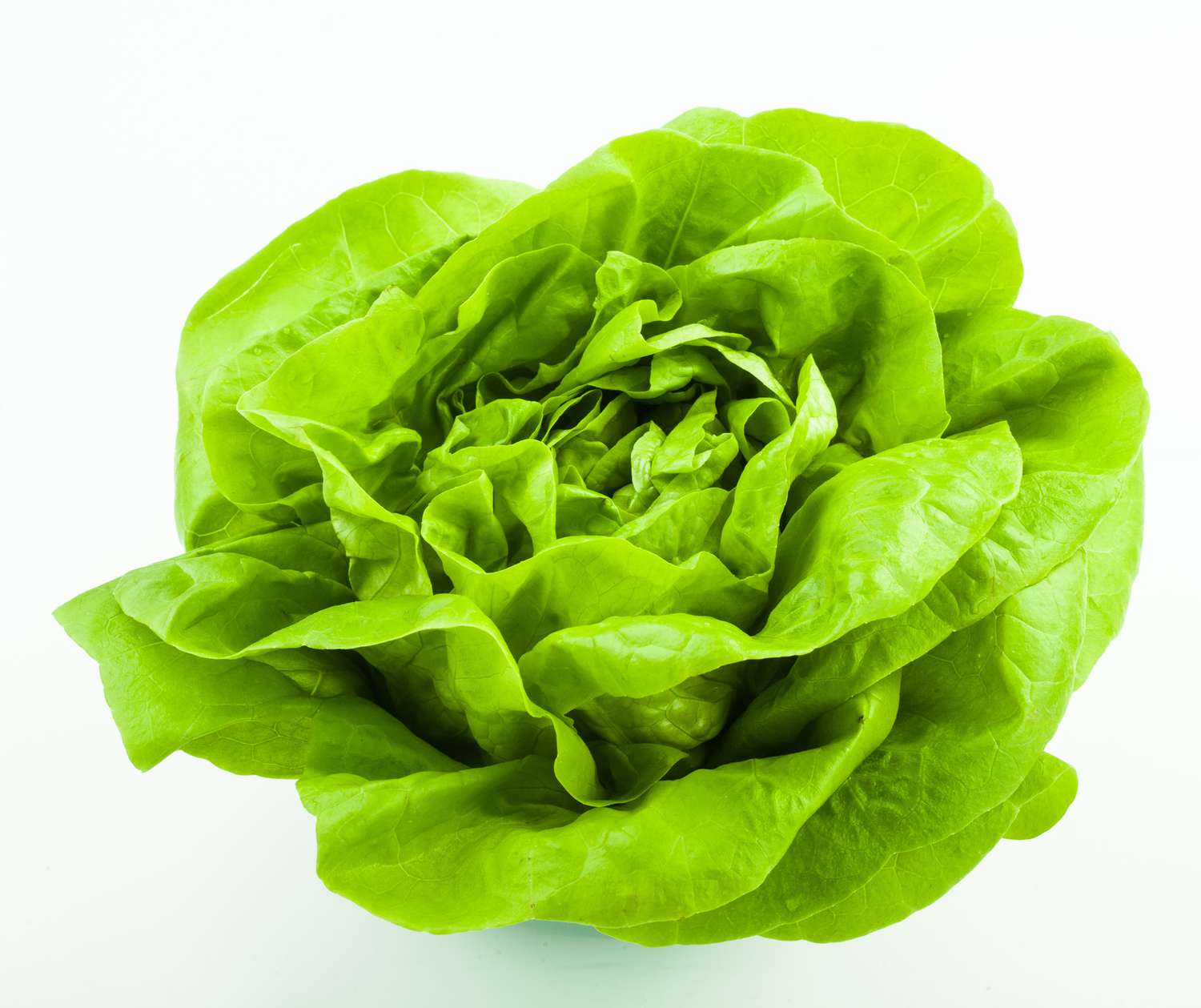
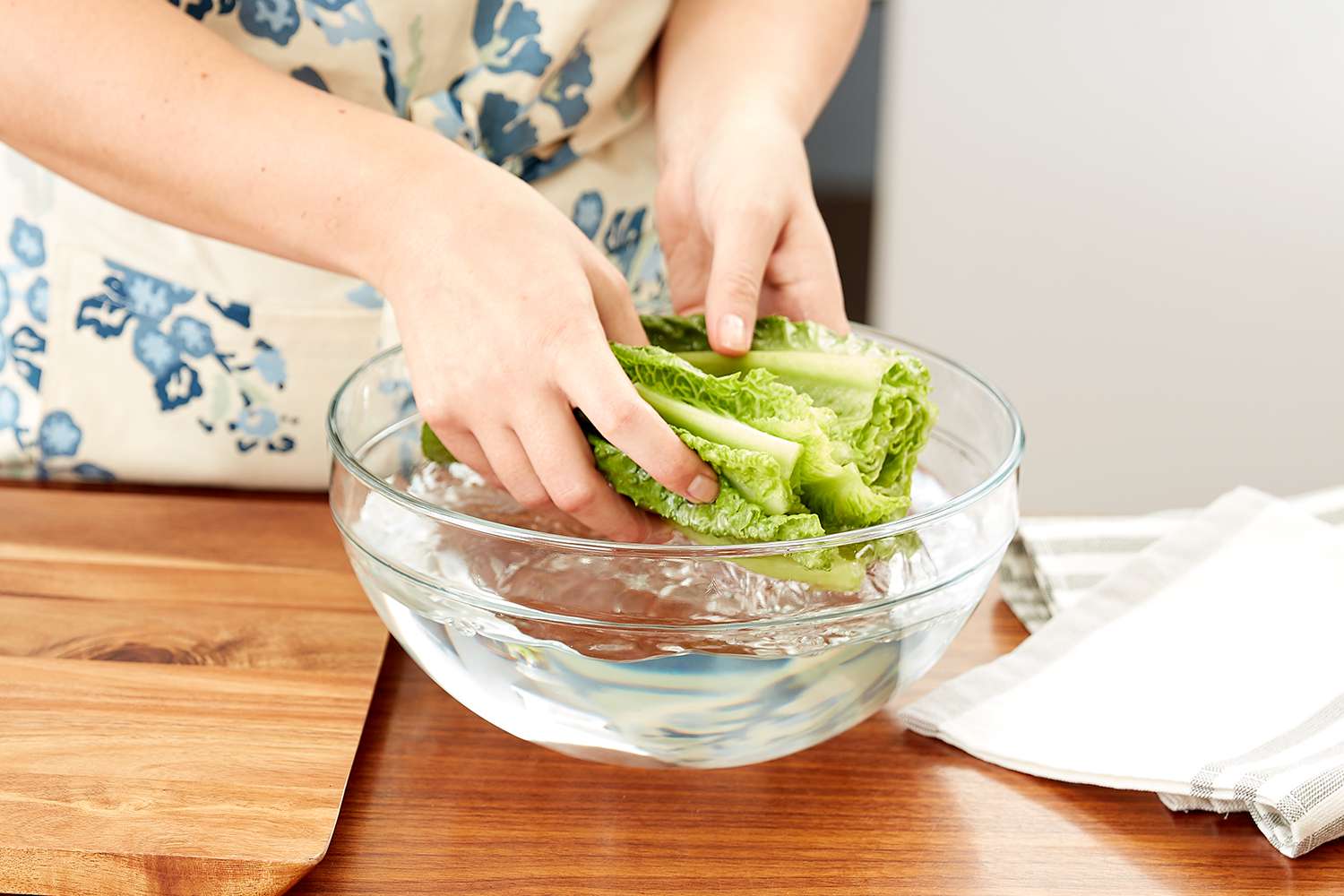
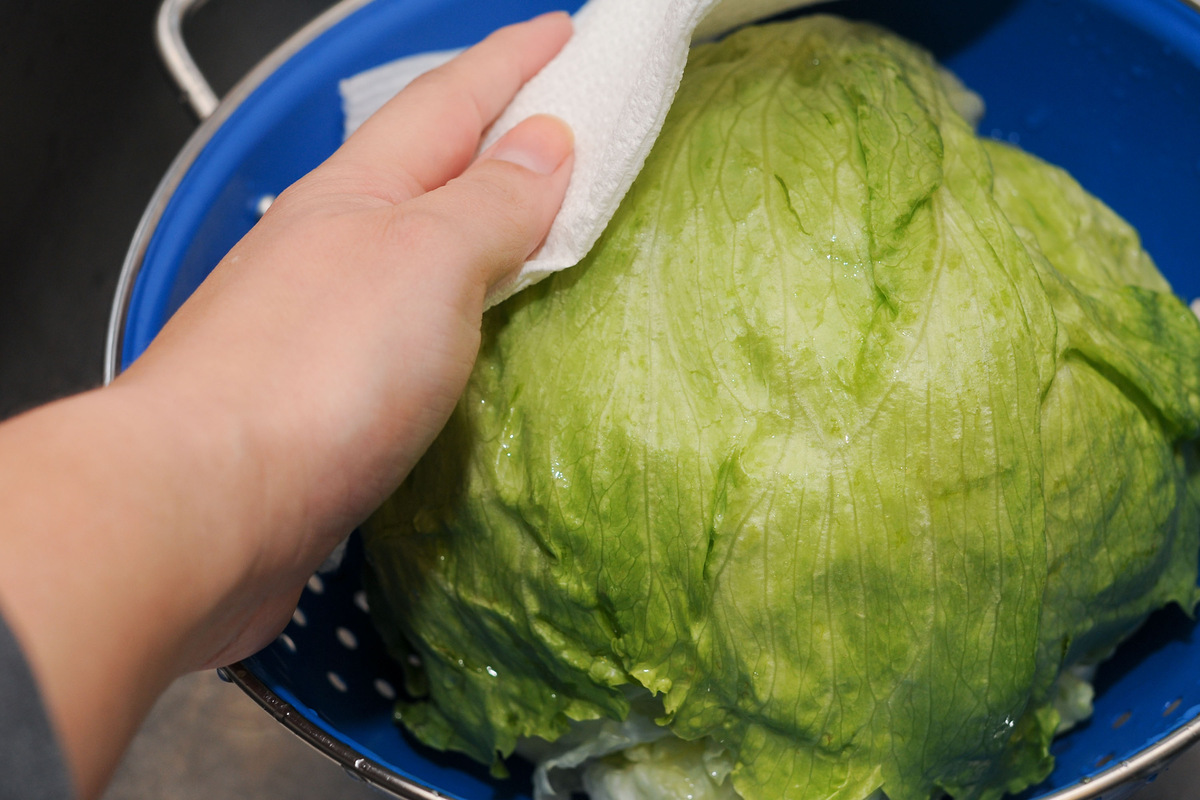
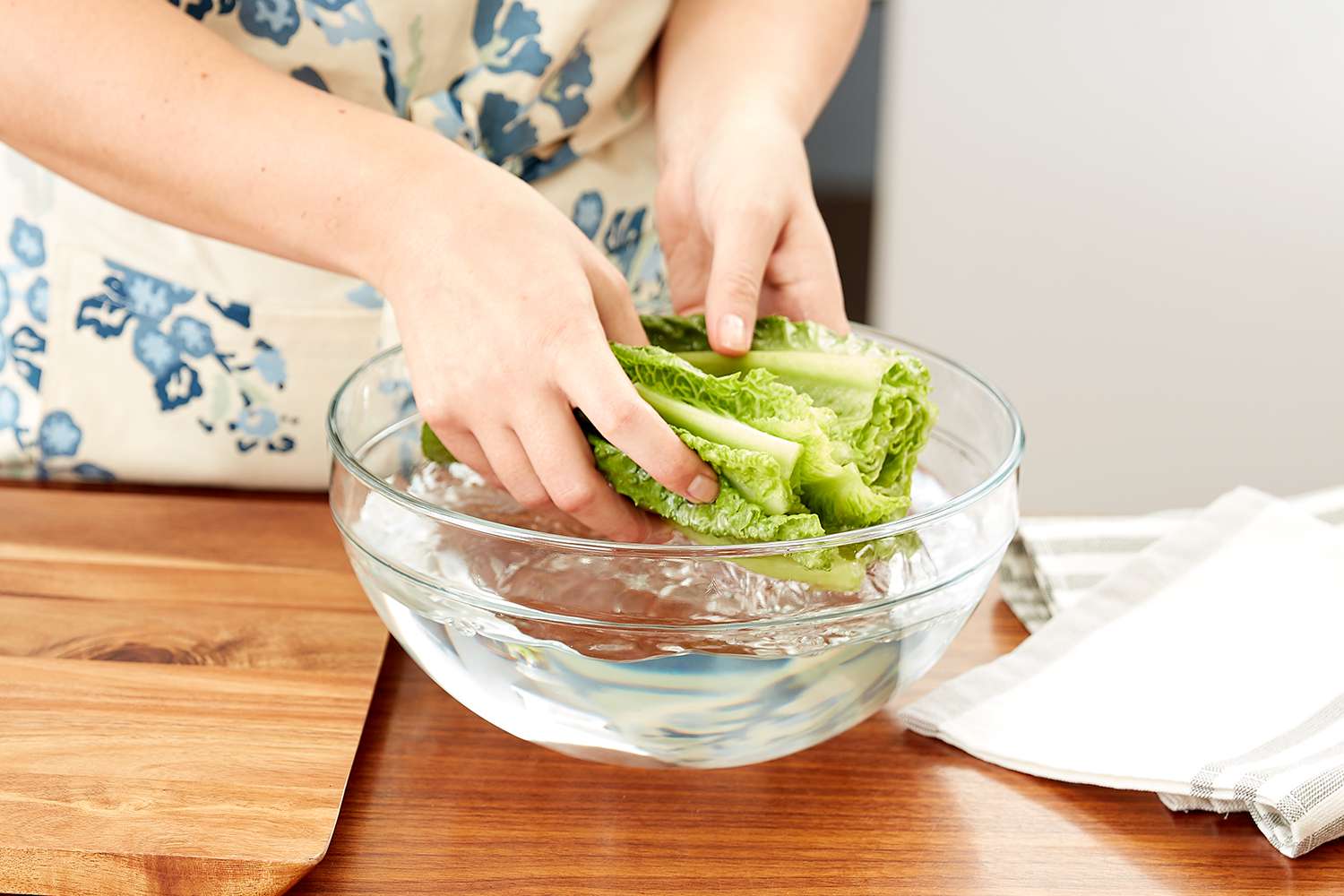

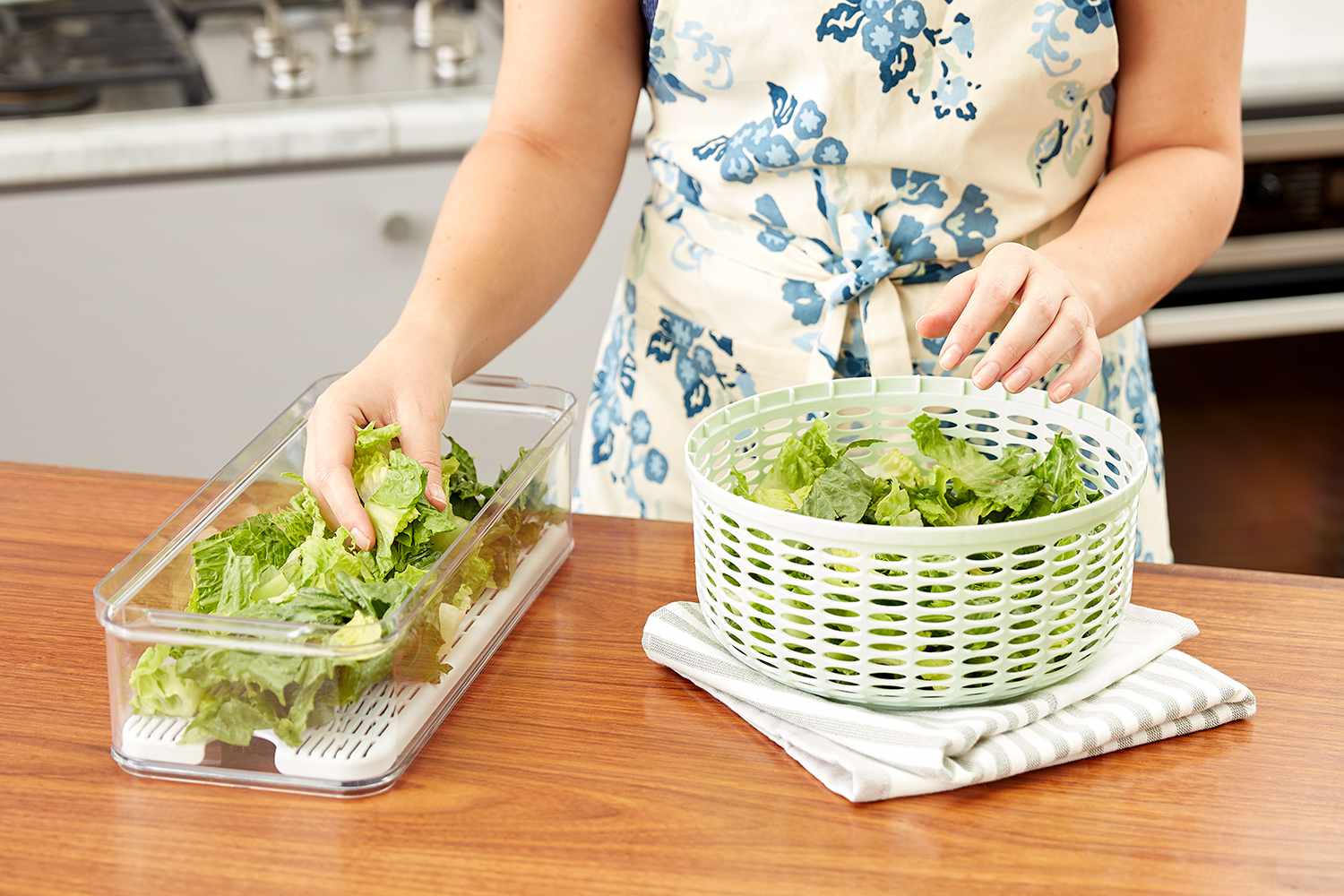

0 thoughts on “How To Store Lettuce In The Refrigerator”